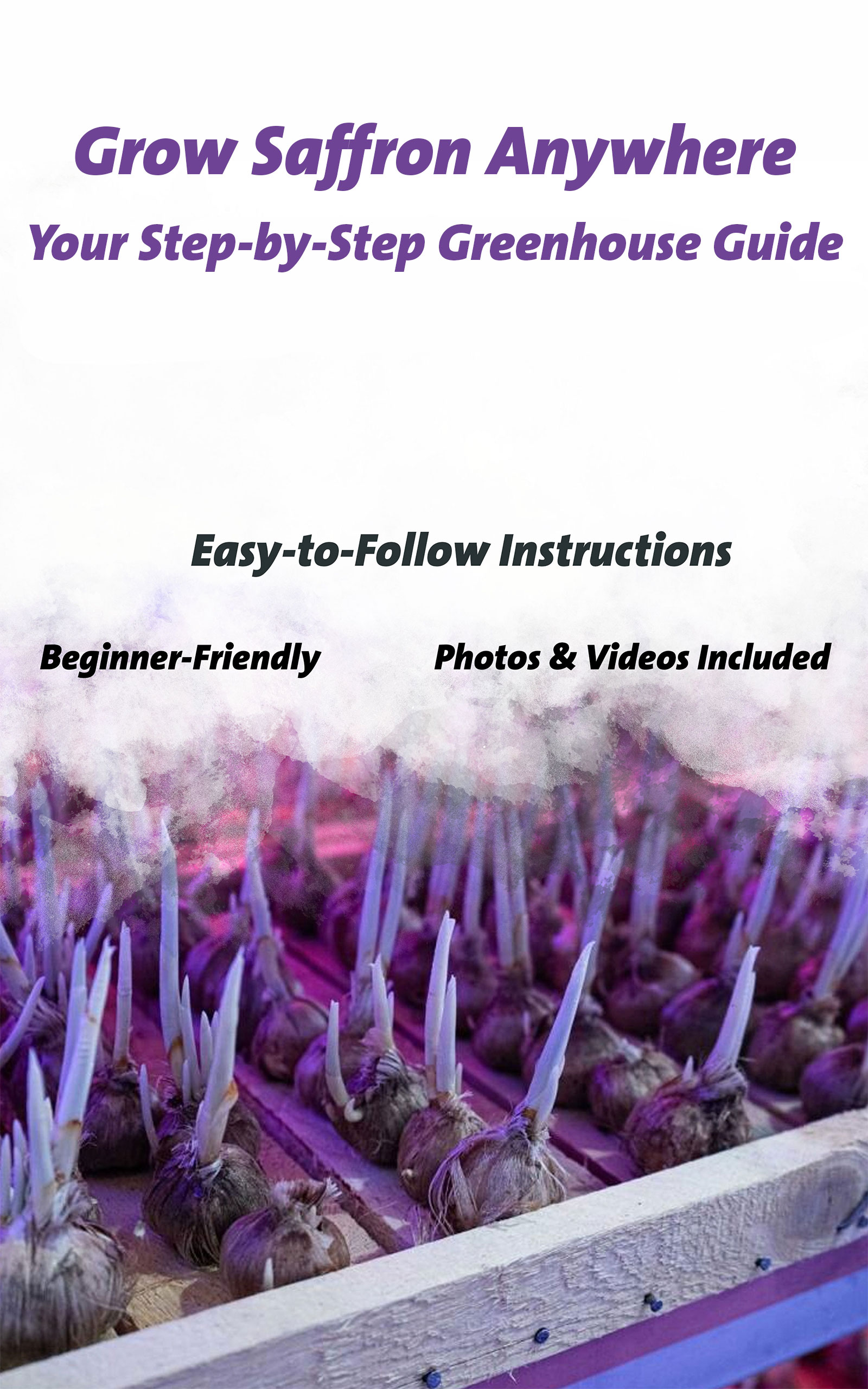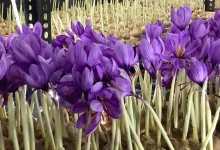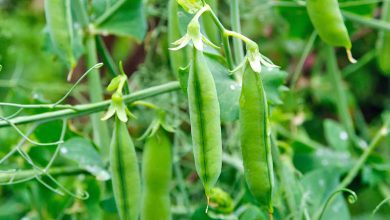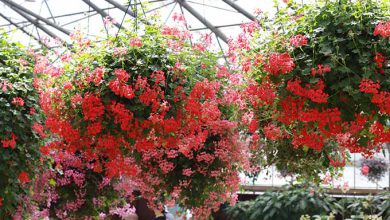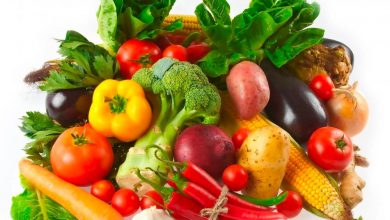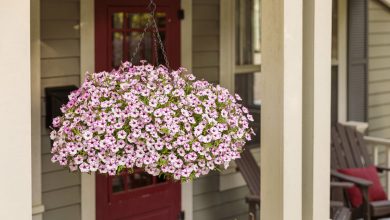From Seed to Harvest: The Ultimate Guide to Growing Chickpeas

The nutrient-rich legume known as chickpeas, often called garbanzo beans, has been grown for many years. They are a mainstay in Middle Eastern, Indian, and Mediterranean cuisine and have become more well-liked recently as a flexible and beneficial ingredient. The following is a thorough guide to cultivating chickpeas if you’re interested.
Managing the Soil for Chickpeas
Chickpeas need organically rich, loose soil that drains well. They may thrive in a variety of soils, from sandy loam to dense clay, but it’s crucial to steer clear of those that are too acidic or alkaline. To increase the fertility and texture of the soil before planting, add compost or aged manure. An ideal pH range for chickpeas is 6.0 to 8.0.
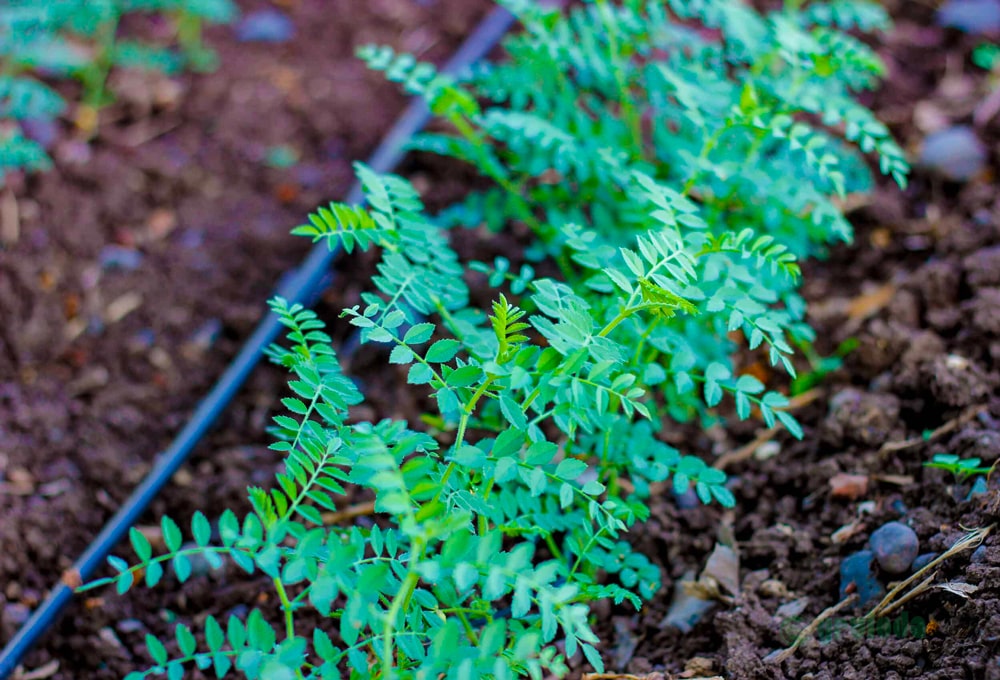
Techniques for Planting Chickpeas
You may produce chickpeas from seed or transplants. If started from seed, plant them either immediately into the ground after the last anticipated frost or within four weeks prior. The seeds should be sown 2 to 4 inches apart and 1 to 2 inches deep. If you are starting with transplants, space them 8 to 12 inches apart and plant them at the same depth as they were in their original container.
Stages of Chickpea Growth
Chickpeas have a lengthy growing season and can reach maturity after up to 100 days. From seedling to flowering to pod development to maturity, they develop in stages. It’s crucial to keep an eye out for pests and diseases, water the plants frequently, and give support to their climbing vines during each stage.
Providing Water to Chickpea Plants
Regular watering is necessary for chickpeas, especially when they are flowering and developing pods. Although they can withstand drought, they work best with regular watering. Depending on the soil type and weather, deeply water the plants once or twice a week. Avoid overhead irrigation since it may promote foliar diseases.
Methods for Fertilizing Chickpeas
Since chickpeas are nitrogen-fixing plants, they have the capacity to transform atmospheric nitrogen into a form that can be utilized by both them and other plants. They nevertheless gain from additional fertilization, particularly phosphate and potassium. While planting, add a balanced fertilizer, and during the growing season, side-dress with aged manure or compost.
Management of Chickpea Plant Disease
Many ailments, such as Fusarium wilt, Ascochyta blight, and Botrytis gray mold, can affect chickpeas. Use disease-resistant seed varieties, perform crop rotation, avoid planting where other legumes have recently grown, and avoid planting in those regions. Maintain adequate plant spacing for proper air circulation, and swiftly remove any infected plant material.
Chickpea harvesting
When the pods start to dry up and become yellow or brown, chickpeas are ready to be harvested. The pods should not be fragile and should be dry and solid. They can be harvested by pulling up the entire plant or by pruning shearing the pods off. Before shelling the beans, let the pods dry out further in a warm, dry environment for a few weeks.
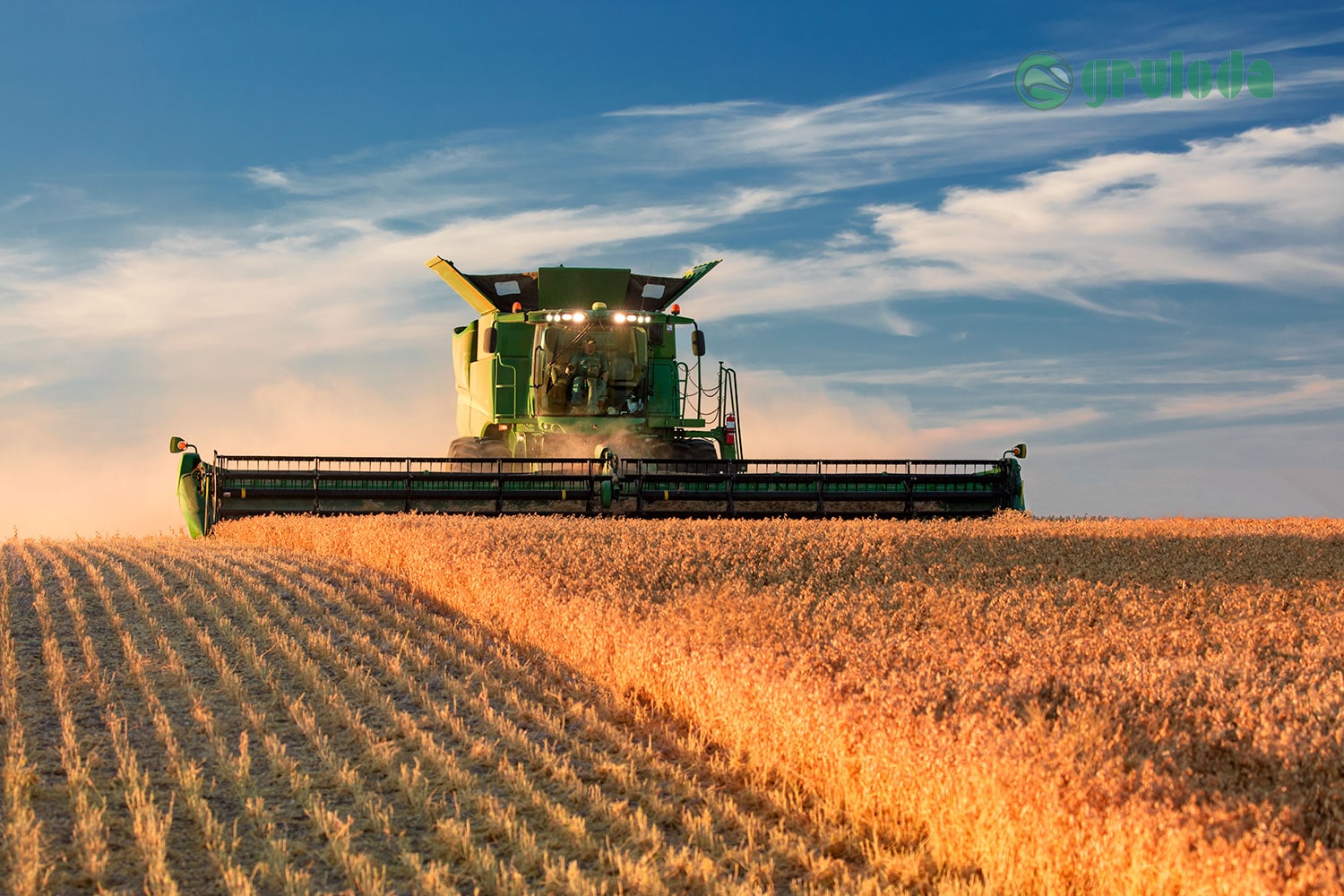
Chickpea Companion Planting
Chickpeas can profit from being planted alongside specific crops like cilantro, dill, and fennel. These plants can draw advantageous insects and ward off detrimental pests, enhancing plant health in general. Alliums like onions and garlic should not be planted alongside chickpeas since they can hinder their growth.
Rotation of the chickpea crop
Crop rotation is crucial for keeping the soil healthy and preventing the development of pests and diseases in the garden. Being legumes, chickpeas have the special capacity to work in symbiosis with nitrogen-fixing bacteria to fix nitrogen in the soil. This makes them a great crop to rotation with others, such leafy greens, corn, or tomatoes, that need more nitrogen.
To lower the risk of soil-borne pests and illnesses, it’s crucial to avoid planting chickpeas in the same spot or family of plants for at least three years when rotating crops.
Nutrition of the Chickpea Plant
A balanced nutrient supply is necessary for chickpeas to grow healthily. They require trace levels of micronutrients including zinc, copper, and boron in addition to moderate amounts of nitrogen, phosphorus, and potassium. Micronutrient deficits in the plant can result in stunted growth, low yields, and inadequate amounts of certain nutrients.
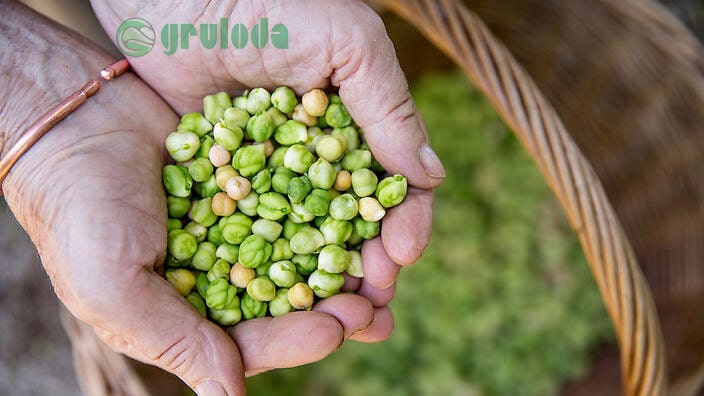
Before planting, think about adding organic matter to your soil, such as compost or aged manure, to make sure your chickpeas have access to all the nutrients they require. A balanced, slow-release fertilizer made especially for legumes can also be used.
Chickpea Seed Preservation
It’s critical to store chickpea seeds carefully if you intend to save them in order to preserve their viability. Dried chickpea seeds should be kept in an airtight container in a dry, cool place. If kept at a constant temperature of 32-41°F (0-5°C) with a relative humidity of less than 60%, they can be retained for up to three years.
Methods for Pruning and Training Chickpea Plants
Chickpea plants may grow fairly tall and bushy, so it’s crucial to give them support and to frequently prune them to keep them from getting out of control. Moreover, pruning can help to increase airflow and lower the danger of fungus illnesses.
Use stakes or trellises as support to train your chickpea plants to grow erect. Remove any lateral branches that begin to encroach too low on the main stem as the plants mature. By doing this, the plant’s energy will be directed upward, where it will grow larger, more fruitful branches.
Plant breeding and genetics for chickpeas
Because of the complicated genetics of chickpeas, scientists are constantly trying to create new kinds that are more productive, disease-resistant, and suitable for various growing environments. In addition to conventional breeding techniques, new chickpea varieties with particular features are being created using genetic engineering tools like CRISPR-Cas9.
You may assist chickpea research as a home gardener by taking part in citizen science initiatives or by cultivating and preserving seeds from several types to share with other gardeners.
What time of year is best for planting chickpeas?
According on the temperature and locality, there is a best time to grow chickpeas. As a rule, chickpeas are a cool-season crop that does best in temperatures between 60 and 70°F (15 and 21°C). Typically, they are planted in the late fall or the early spring, depending on the environment and the region. Chickpeas may be grown in the fall and harvested in the spring where the winters are mild. Chickpeas are sown in the spring and harvested in the summer in places where the winters are severe. The ideal planting season for chickpeas should be determined by checking with regional agricultural extension agencies or speaking with knowledgeable local gardeners.
Which type of soil is ideal for producing chickpeas?
Loose, well-drained soil that is rich in organic matter and has good drainage is the ideal soil for producing chickpeas. Between a pH of 6.0 to 7.5, chickpeas like a slightly acidic to neutral soil. Moreover, the soil should not include any hardpan or other root-growth inhibitors and should have a high water-holding capacity. A heavy clay soil or one with a lot of nitrogen should be avoided since they can produce huge, bushy plants that produce less.
How far underground should chickpea seeds be sown?
In the soil, chickpea seeds should be sown 1 to 2 inches (2.5 to 5 cm) deep.
How frequently do my chickpea plants need watering?
Moderate watering is necessary for chickpea plants, especially when they are blooming and developing pods. Once a week, or anytime the top 2-3 inches of soil feel dry, give them a thorough watering. Make cautious to avoid overwatering because it might cause root rot.
How long do chickpeas take to sprout?
After sowing, chickpeas normally sprout five to seven days later. Depending on elements including temperature, moisture content, and the particular type of chickpea being produced, the precise period may change. To encourage good development throughout the sprouting phase, the soil must be wet but not soggy.
How can I guard against bugs hurting my chickpea plants?
You may protect your chickpea plants from pests in a few different ways: Crop rotation is the first step in preventing insect infestations in the soil. Never grow chickpeas in the same spot every year. 2 Use companion plants to ward against pests. Planting plants like marigolds, mint, or garlic can do this. 3 Maintain excellent hygiene: To lessen the chance of insect infestations, keep the space surrounding your plants clean and debris-free. 4 Employ natural pest management techniques to get rid of or deter pests. Natural pest control techniques include neem oil and insecticidal soap. 5 Keep a watch on your plants: Check your chickpea plants frequently for any indications of pest damage, such as drooping plants or holes in the leaves. Early discovery can assist in halting the problem's escalation.
Chickpeas can be grown in containers, right?
Chickpeas can, in fact, be grown in containers. But it's crucial to pick a container with proper drainage and at least a 12-inch depth. Sow the seeds at a depth of around 2 inches in the container after filling it with well-draining potting soil. With frequent watering and careful attention to avoid overwatering, place the container in a sunny area. While bush forms of chickpea typically do better in pots than vine ones, make careful to select them.
How will I know when to harvest my chickpea plants?
When the pods start to dry up and become yellow or brown, chickpeas are ready to be harvested. Also, you may examine the color and texture of the seeds by rupturing open a pod. Chickpea seeds that are mature should be uniform in color, hard, and dry. By cutting the plant off at the base after the bulk of the pods have gone yellow or brown, you may harvest the entire plant and dry the pods in a warm, dry environment. The pods can either be removed and placed in a well-ventilated area to continue drying, or they can be left on the plant until they are entirely dry.
Can I cultivate my own plants using chickpeas from the grocery store?
Sure, you can grow your own plants using chickpeas from the grocery store. Nevertheless, using certified seed is advised since it has been carefully grown and selected for the best development and production. To enhance germination rates when purchasing chickpeas from the grocery store, be sure to select dry, uncooked seeds and soak them in water overnight before planting.
Recent search terms:
- how we sow chickpea in the summer
